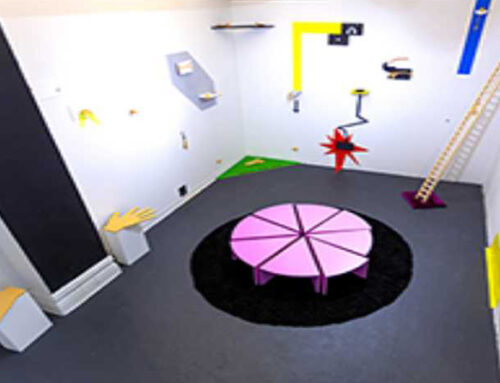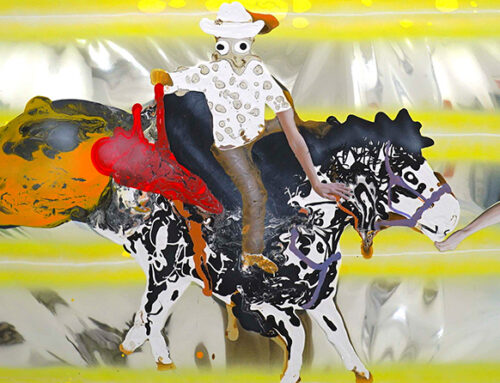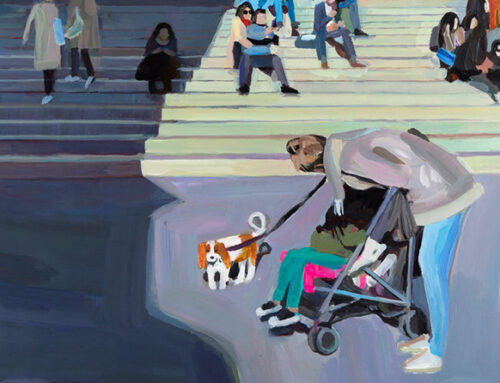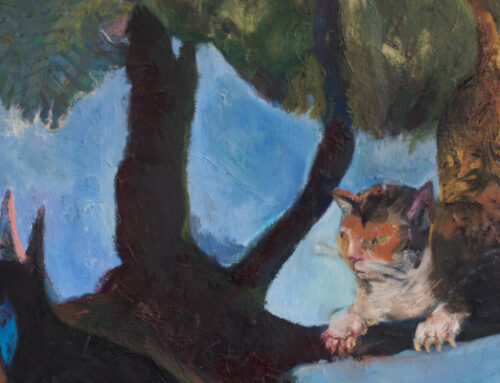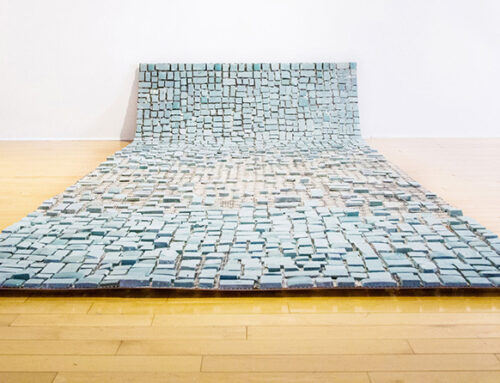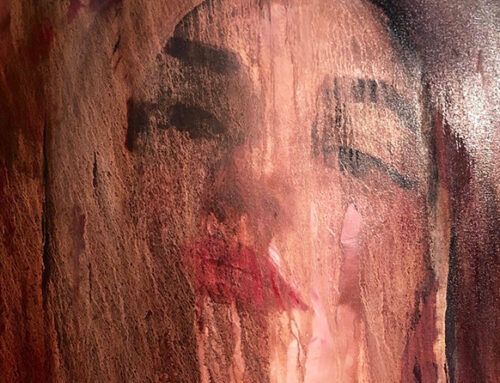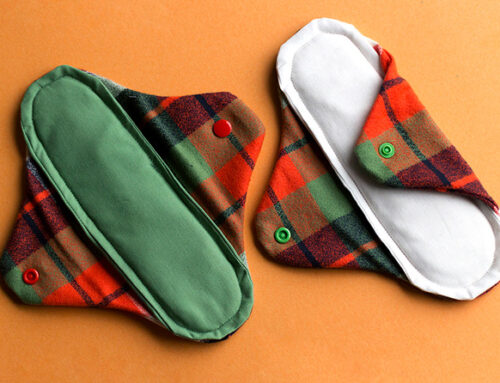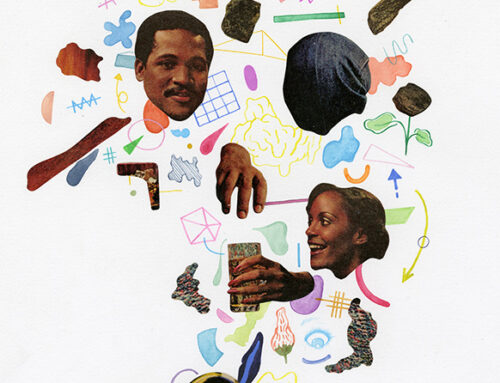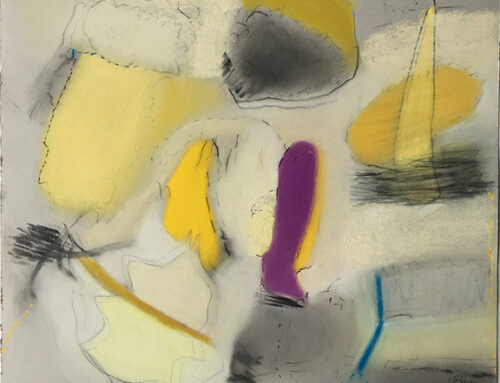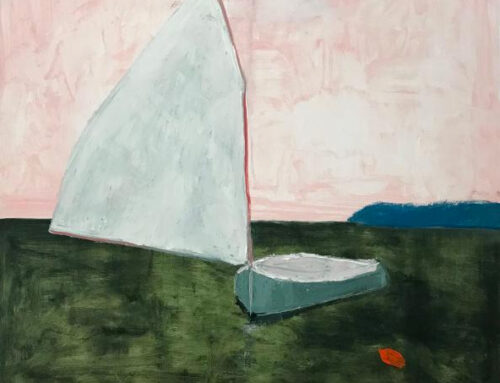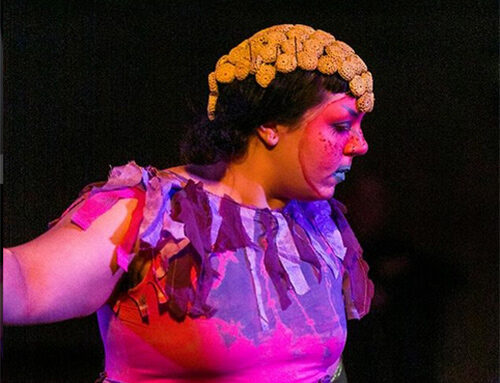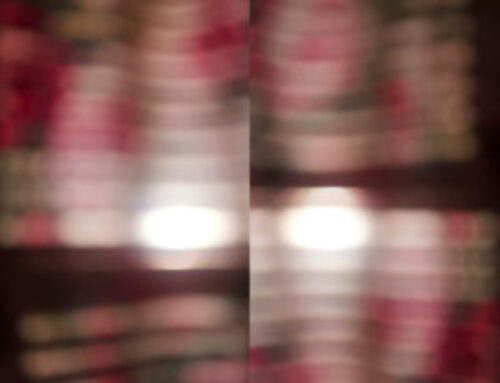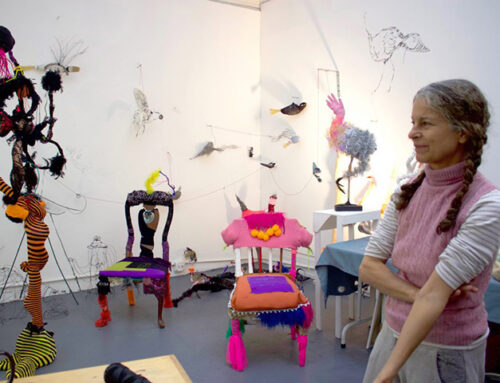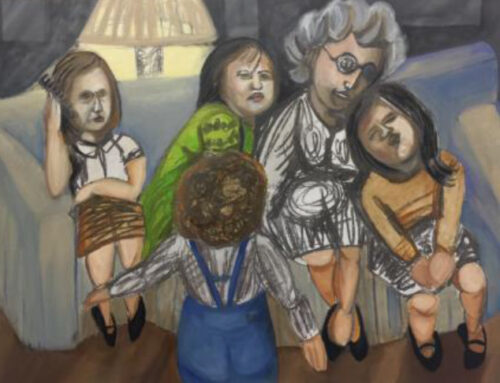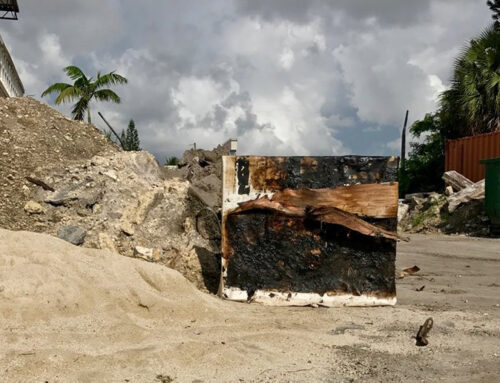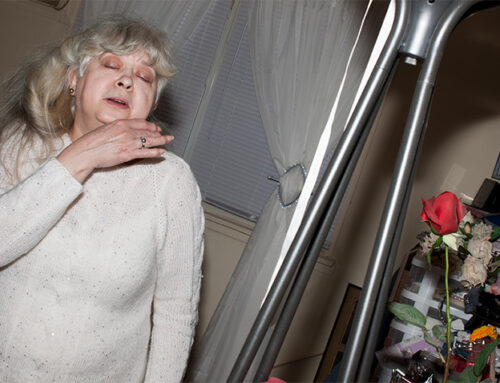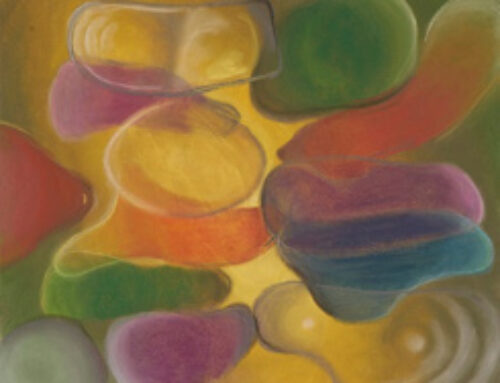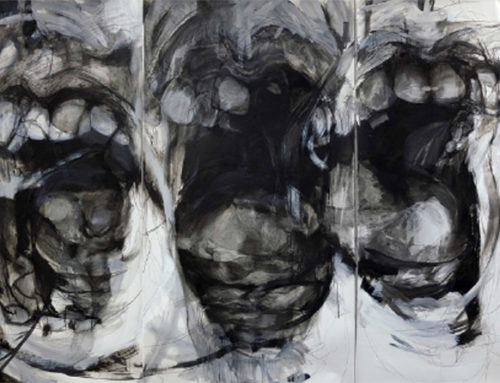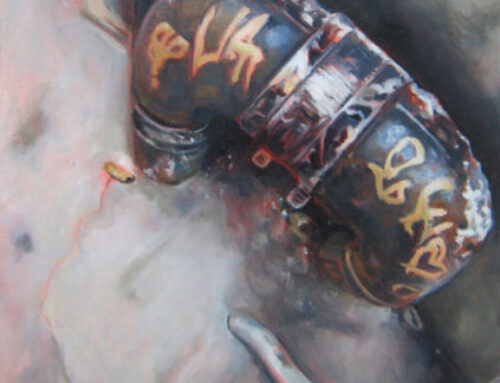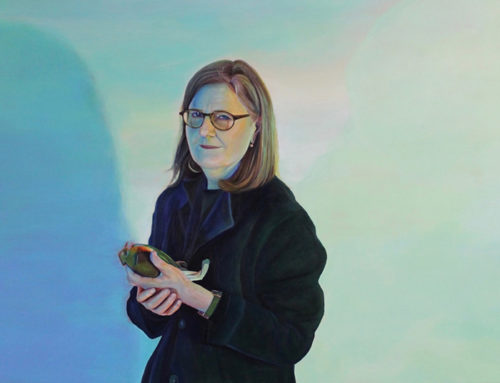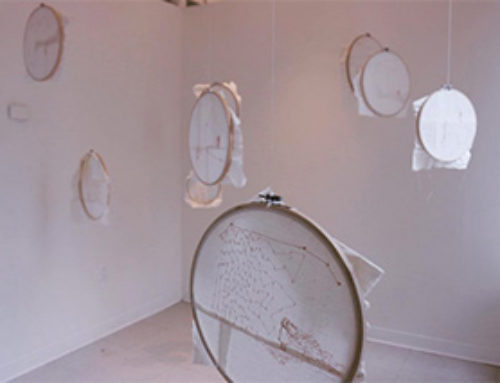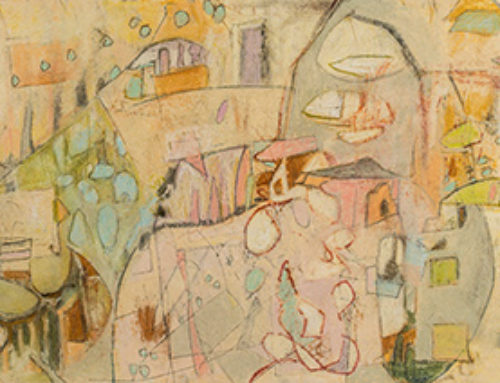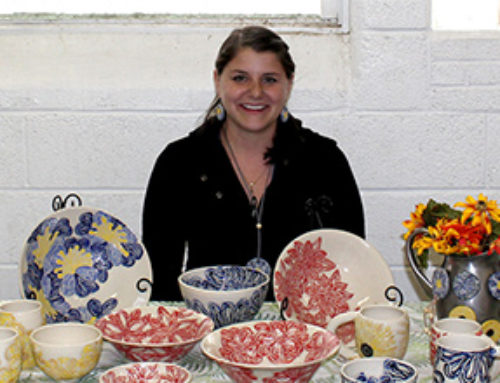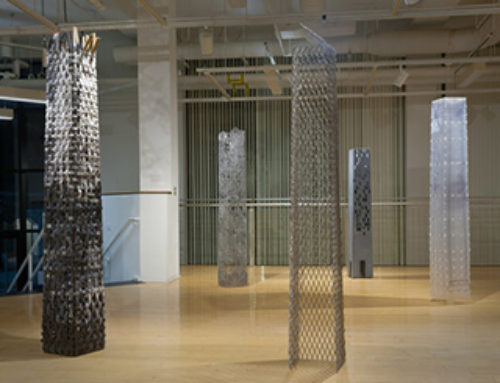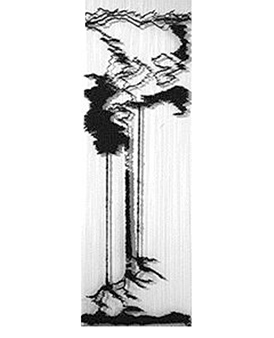
Standing Tree
Cotton string and black yarn
9′ x 3″, 2018
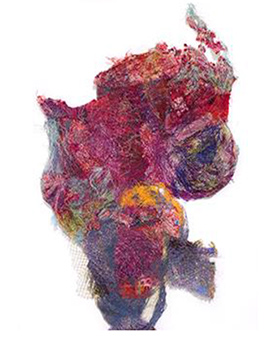
Stitches
Found fiber scraps and thread
11 x 13″, 2018
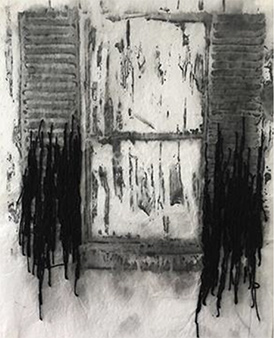
Shutters
Ink and embroidery thread on rice paper
12 x 10″, 2018
ELLA WHITTEMORE HILL | INTERVIEW QUESTIONS
Q. How did your passion for art begin taking shape for you—at home, school, a mentor, and other artists who inspired you or a personal experience that started the fermenting process?
A. In summers, I often went to my grandmother’s house for ‘Nana Camp’: my grandmother was a fiber artist and taught me experimental fiber art practices and sewing traditions during our small camp together. She taught me on her sewing machine as we worked together to make a nine-patch quilt, my first and only quilt. She gave me scraps of fabric to practice hand stitching techniques and patterns. I’d mimic the work she was doing and then scrap it out of boredom and make up my own knots and stitches. She’d receive a package in the mail with old Tyvek and we’d stick heat guns to it so that it would begin to bubble and shrink and then harden as it dried. We’d collect her fabric dyes and mix tubs of colors to dunk our new material through. Later when all was dry we’d go back to the sewing machine and shove the stiffened Tyvek through the machine. These practices of traditional style American quilt making mixed with unconventional uses of materials was what made up her studio. I learned how to access and reach for more creativity. Creativity we all have but we don’t always go for it without hesitation. All you have to do is make sure you have one iron for melting plastics and dyed pieces and one iron for your white blouses. Today I continue her artistic legacy, now using the experimental stitching and embroidery practices she taught me.
Q. How would you describe your artwork, in terms of materials or mediums? Has it changed or evolved since formal training and what are your goals for it?
A. I feel very tied to the materials in my art. I feel like I am both defined by the medium and try to hide the process and materials. I love when I have used a material in a way that it may read as another material at a distance and then at closer inspection you see the details and the hidden pieces to it all. However, since a majority of my work would be considered fiber art, I feel that I
am very defined by that. Fiber art is traditionally labeled as women’s work. My practice is definitely influenced by the female artists in my family and the sewing practices that were passed down to me, and like most of the women in my family, I feel that it’s weight is still important in my work.
I use soft materials not only because it is a tradition I have learned but because I work with concepts of memory and stories. The faded and fluid qualities of memories are translated into the soft materials that float above the ground, no longer grounded in reality and the rigidity of facts and architectures but move through the more fluid space of memory.
Q. How important is a personal style to you as an artist or does your work reflect larger social and cultural issues?
A. I see personal style not necessarily as my deliberate choices in a project but as the surface level decisions that I am drawn to—my crude gestural marks, my natural forms and materials. These forms, material choices, colors, are my personal style. Not necessarily integral to my concepts but key to my style. Though my art isn’t overtly about women’s work or the history of fiber arts, I am aware of the impact on my work and see that as more of the background, my style. My material choices or decisions work closer towards natural materials because I am drawn to those colors and shapes and environmental awareness. These stylistic choices are my instincts, they are what I draw inspiration from when I’m working. My style and content are intertwined through instinct and choices.
Q. Has being a woman affected your work and others’ perception of it? How do you feel about being part of a woman’s art organization?
A. Being a part of a women’s art organization I feel makes sense for my work. So much of my learning and inspiration comes from the women in my family — my grandmother, my mother, my sister, my friends. I feel like my practice is something that was passed down to me through generations of females. But what I find the most compelling is that the art in my family is shared and collaborated. My mother and I share our work with each other and loan each other materials to use in our own work where we cross back and forth over the lines of influence. Working with soft materials I don’t believe is a gendered medium but since I often work with concepts of home and interiors and thoughts of my grandmother, I feel that my art is influenced and informed by important women and has reference to that history of female work.



